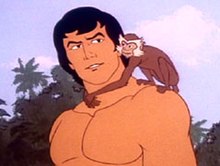
Cheeta is a chimpanzee character that appeared in numerous Hollywood Tarzan films of the 1930s–1960s, as well as the 1966–1968 television series, as the ape sidekick of the title character, Tarzan. Cheeta has usually been characterized as male, but sometimes as female, and has been portrayed by chimpanzees of both sexes.
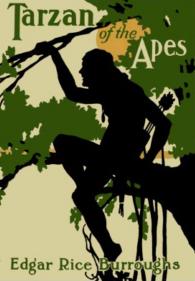
Tarzan of the Apes is a 1912 novel by American writer Edgar Rice Burroughs, and the first in the Tarzan series. The story was first printed in the pulp magazine The All-Story in October 1912 before being released as a novel in June 1914.
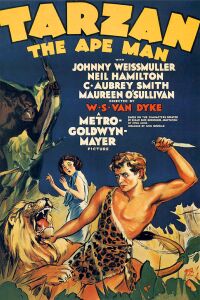
Tarzan the Ape Man is a 1932 pre-Code American action adventure film released by Metro-Goldwyn-Mayer featuring Edgar Rice Burroughs' famous jungle hero Tarzan and starring Johnny Weissmuller, Neil Hamilton, C. Aubrey Smith and Maureen O'Sullivan. It was Weissmuller's first of 12 Tarzan films. O'Sullivan played Jane in six features between 1932 and 1942. The film is loosely based on Burroughs' 1912 novel Tarzan of the Apes, with the dialogue written by Ivor Novello. The film was directed by W.S. Van Dyke. Metro-Goldwyn-Mayer released two remakes of Tarzan, the Ape Man in 1959 and in 1981, but each was a different adaptation of Rice Burroughs' novel. It is also the first appearance of Tarzan's famous yell.
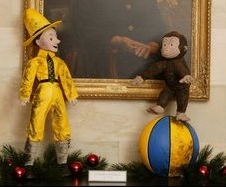
A pet monkey is a monkey kept as a pet. The practice of keeping monkeys as pets is controversial.
Kerchak is a fictional ape character in Edgar Rice Burroughs's original Tarzan novel, Tarzan of the Apes, and in movies and other media based on it.
Mangani is the name of a fictional species of great apes in the Tarzan novels of Edgar Rice Burroughs, and of the invented language used by these apes. In the invented language, Mangani is the apes' word for their own kind, although the term is also applied to humans. The Mangani are represented as the apes who foster and raise Tarzan.
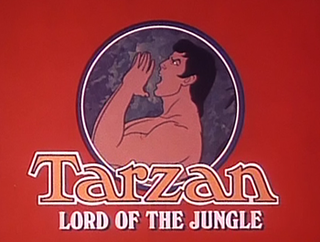
Tarzan, Lord of the Jungle is an American animated series created by the Filmation studio for Saturday mornings on CBS, starting in 1976. This was the first animated series about the jungle hero. There are 36 episodes produced over four seasons.

Tarzan the Untamed is a book by American writer Edgar Rice Burroughs, the seventh in his series of twenty-four books about the title character Tarzan. It was originally published as two separate stories serialized in different pulp magazines; "Tarzan the Untamed" in Redbook from March to August, 1919, and "Tarzan and the Valley of Luna" in All-Story Weekly from March to April 1920. The two stories were combined under the title of the first in the first book edition, published in 1920 by A. C. McClurg. In order of writing, the book follows Jungle Tales of Tarzan, a collection of short stories about the ape-man's youth. Chronologically, it follows Tarzan and the Jewels of Opar.
Kala is a fictional ape character in Edgar Rice Burroughs's original Tarzan novel, Tarzan of the Apes, and in movies and other media based on it. She is the ape mother of Tarzan who raises him.

Tarzan, Lord of the Jungle is a novel by American writer Edgar Rice Burroughs, generally considered the eleventh in his series of twenty-four books about the title character Tarzan. The story was first published as a serial in Blue Book Magazine from December 1927 through May 1928; it first appeared in book form in a hardcover edition from A. C. McClurg in September 1928.
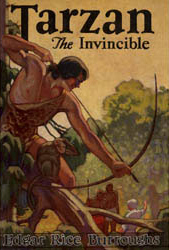
Tarzan the Invincible is a novel by American writer Edgar Rice Burroughs, the fourteenth in his series of twenty-four books about the title character Tarzan. The novel was originally serialized in the magazine Blue Book from October, 1930 through April, 1931 as Tarzan, Guard of the Jungle.

Tarzan's Quest is a novel by American writer Edgar Rice Burroughs, the nineteenth in his series of twenty-four books about the title character Tarzan. Originally serialized in six parts, as Tarzan and the Immortal Men, in The Blue Book Magazine, from October 1935 to March 1936; the first collected edition was published as the 1936 novel Tarzan’s Quest by Burroughs’ own publishing company.

Tarzan and the Castaways is a collection of three stories by American writer Edgar Rice Burroughs, the 24th and final in his series of twenty-four books about the jungle hero Tarzan. The title novella, and the two short stories were first published in pulp magazines in 1940 and 1941. The combined book was published first as a hardcover by Canaveral Press in early 1965, and as a paperback by Ballantine Books in July 1965.
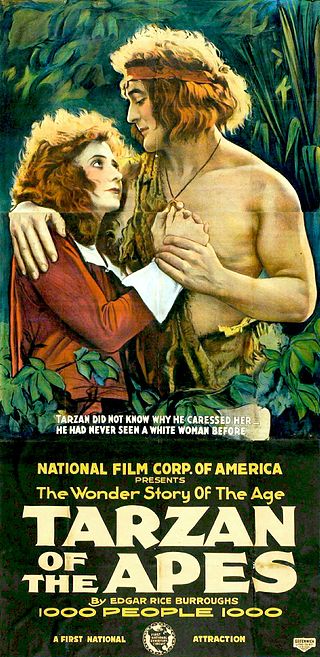
Tarzan, a fictional character created by Edgar Rice Burroughs, first appeared in the 1912 novel Tarzan of the Apes, and then in twenty-four sequels by Burroughs and numerous more by other authors. The character proved immensely popular and quickly made the jump to other media, first and most notably to comics and film.

Tarzan and the Jungle Boy is a 1968 adventure film starring Mike Henry in his third and final appearance as Tarzan. Rafer Johnson and Aliza Gur co-star. The film was produced by Sy Weintraub and Robert Day, written by Stephen Lord and directed by Robert Gordon. Released on May 1, 1968, it is the twenty-eighth and final film in the Tarzan film series that began with 1932's Tarzan the Ape Man, and was followed by a self-titled remake film in 1981.

Tarzan and the Lost Safari is a 1957 action adventure film featuring Edgar Rice Burroughs' famous jungle hero Tarzan and starring Gordon Scott, Robert Beatty, Yolande Donlan and Betta St. John. Directed by H. Bruce Humberstone, it was the first Tarzan film released in color, Eastman Color. The nineteenth film of the Tarzan film series that began with 1932's Tarzan the Ape Man and the first produced by MGM since 1942, it was filmed in Nairobi, British East Africa. The character of Jane does not appear in this motion picture. Released April 12, 1957, it was followed by Tarzan and the Trappers in 1958.
Jiggs was a male chimpanzee and animal actor who originated the character of Cheeta in the 1930s Hollywood Tarzan movies. He was owned and trained by Tony and Jacqueline Gentry.

Tarzan is a fictional character, a feral child raised in the African jungle by the Mangani great apes; he later experiences civilization, only to reject it and return to the wild as a heroic adventurer.
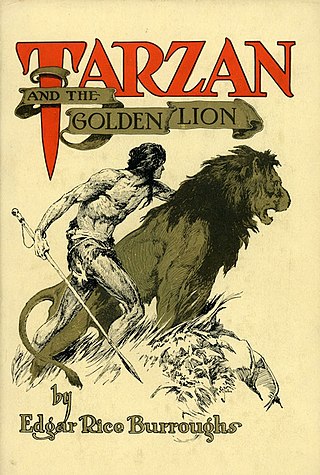
Jad-bal-ja, the Golden Lion is a fictional character in Edgar Rice Burroughs's Tarzan novels, and in adaptations of the saga to other media, particularly comics.

Tarzan is a series of 24 adventure novels written by Edgar Rice Burroughs (1875–1950) and published between 1912 and 1966, followed by several novels either co-written by Burroughs, or officially authorized by his estate. There are also two works written by Burroughs especially for children that are not considered part of the main series.
Ullery, David A. The Tarzan Novels of Edgar Rice Burroughs: An Illustrated Reader's Guide. McFarland & Company, Jefferson, NC, 2001, pages 199-200.
